

 Has organic lost momentum? What counts now is sustainable?
Has organic lost momentum? What counts now is sustainable?
The trend towards organic wine has lost momentum. More and more producers choose to be “almost organic” in order to be able to use non-organic pesticides in difficult years. Today, the producers rather focus on being sustainable than on being organic. Organic is a bit “outdated”.
We have both heard it said and read this a lot lately.
Is this a good description of today’s trends?
No, it doesn’t match the reality that we see. It does not match with what wine producers tell us and does not match with the statistics.
Organic is just as big a trend today as before. In ten years, France has tripled its area with organic vineyards. 2017 (the latest numbers) saw a big increase. The same development can be seen in most other large wine countries. Some statistics here. The forecast is that the development will continue at the same rate.
Even the big (and somewhat traditional and old-fashioned) chateaux in Bordeaux focus more and more on organic. Chateau Pontet Canet was a pioneer. Recently, Bernard Arnault, the owner of Chateau d’Yquem, said that they aim to become organic. And biodynamic. Arnault also controls 22% of the production in champagne and 46% in Cognac (which, after all, originates from wine) so his influence cannot be underestimated.
On a smaller scale, we see the same development among the approximately 200 different producers that we personally visit on our travel and tours each year. More and more become organic. (And sometimes biodynamic.)
So, no, organic is not “out”. Not at all.
Rather, what is happening is that “sustainable” has become a parallel trend. Not as a replacement but as something additional. Which is good.
To maybe over-simplify (which can be dangerous), one can say that organics is about the very local environment and above all about which products and techniques one can use in the vineyard and in the wine cellar, while sustainable (which can be quite diffuse and ill-defined) often involves resource use and biodiversity. The one does not replace the other. Instead they complement each other.
Organic continues to grow, and is an important trend in the wine world, at least in the wine world that we see.
If you want to know more about all this, then you can read our book on organic wines, sustainable, biodynamic, and natural. Perhaps the only book that really explains exactly what it is.
Now a few things about travel!
There are a few places left on the autumn wine tours, though not all. Have a look and book your wine tour this fall.
It is also high time to think about the winter, if you yearn to avoid the winter darkness and the cold for a few weeks and instead want to enjoy good wines and good food in the sunshine.
South Africa is thrilling, a wonderful wine country that unfortunately suffer from very negative (political) press recently, but a wonderful wine country to visit. Join us there in February and experience everything they have to offer in this beautiful country.
New Zealand is a breath-taking travel experience. Magnificent landscapes and magnificent wines. Not quite as one would imagine. Better. Join us there in March.
If you are instead tempted by Chile-Argentina then it may be good to know that there are only a few places left. Don’t wait, book now.
Join us on one of the BKWine wine tours. We make wine tours for you, to give you a memory for life. Special tours to special wine producers with outstanding wines and gastronomy.
More on the wine tours in the Brief.
Enjoy the Brief.
Britt & Per
PS: Recommend to your friends to read the Brief !
What’s on at BKWine Tours
2019
- Champagne, September 11-15, 2019
- Bordeaux, October 2-6, 2019
2020
- Chile and Argentina, January 20 – February 2, 2020
- South Africa, February 15-23, 2020
- New Zealand, March 9-24, 2020
- More to come
For more information please contact us on email or on phone (we’re on French time), or go to our wine travel site on www.bkwinetours.com!
We also make custom designed wine tours – on-demand tours for you and a group of friends, for your company (maybe to scout new winegrowers?), for a special event… We can combine winery visits and wine touring with other activities: gastronomic workshops, visit to an oyster farm, truffles hunting, cheese making, and more. More info on the custom designed and bespoke BKWine wine tours and travel here!
Read our book(s)
We have written several wine books, nine at the last count. One of them has been translated to English; the others are (so far) only available in Swedish. This is the one that is available in English: Biodynamic, Organic and Natural Winemaking, Sustainable Viticulture and Viniculture
All our books are on wine, but on different subjects: wines of the Languedoc, wine growing and wine making, the wines of France, Tuscany, Bordeaux, Piedmont, Burgundy, Champagne. Several have won prestigeous prizes and awards. Read more on our wine books.
From the World of Wine
In Brief
In short, news and stuff from the world of wine.
A legend in Bordeaux dies
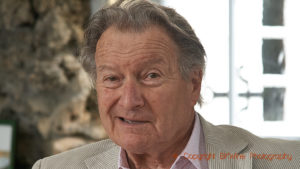 André Lurton died on May 16. He was 94 years old and a legend already during his lifetime. He was born at Château Bonnet where he lived throughout his life. André was one of those who in the 1970s began to change the white, dry Bordeaux wines. His fresh and aromatic Château Bonnet had great success. He made sure that this style of white wine received its own appellation, Entre-deux-Mers. He was also the initiator behind the appellation Pessac-Léognan in 1987. This was an initiative he had mixed feelings about many years later as it led to the rest of Graves being irremediably left behind.
André Lurton died on May 16. He was 94 years old and a legend already during his lifetime. He was born at Château Bonnet where he lived throughout his life. André was one of those who in the 1970s began to change the white, dry Bordeaux wines. His fresh and aromatic Château Bonnet had great success. He made sure that this style of white wine received its own appellation, Entre-deux-Mers. He was also the initiator behind the appellation Pessac-Léognan in 1987. This was an initiative he had mixed feelings about many years later as it led to the rest of Graves being irremediably left behind.
He bought and gave new life to many chateaux in the northern part of Graves, which was later to become Pessac-Léognan, not least the beautiful Château la Louvière. He bought Château Rochemorin in 1974. It was a large estate of 115 hectares but entirely without vines. Everything was replanted and renovated. André was always very fond of Sauvignon Blanc and at Château de Cruzeau and Château Couhins-Lurton this grape is the only one used for the white wines. He will for ever be remembered as one of the great people who fundamentally changed Bordeaux. The family name Lurton will continue to thrive in Bordeaux, through the children, nephews and nieces of André.
Travel: Come to Bordeaux on a wine tour this autumn.
LVMH rules supreme in Champagne and Cognac
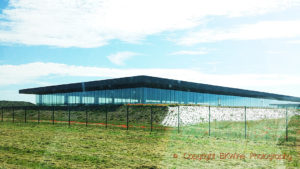 It is generally known that the luxury group LVMH (Louis Vuitton Moët Hennessy) dominates strongly in both Champagne and Cognac but it is still quite surprising when you see the figures. LVMH accounts for 22% of all champagne sales and an astonishing 46% of sales of cognac.
It is generally known that the luxury group LVMH (Louis Vuitton Moët Hennessy) dominates strongly in both Champagne and Cognac but it is still quite surprising when you see the figures. LVMH accounts for 22% of all champagne sales and an astonishing 46% of sales of cognac.
In Champagne, LVMH owns Moët & Chandon, Dom Pérignon, Veuve Clicquot, Krug, Ruinart and Mercier. In 2018, these taken together sold 65 million bottles (!) of champagne from total champagne sale of just over 300 million bottles. Moët & Chandon and Veuve Clicquot are the two biggest Champagne “houses” with a production of about 30 and 12 million bottles, respectively. In third place among the houses is Champagne Mumm with around 8 million. But Nicolas Feuillatte, a cooperative, is actually bigger than Mumm, with over 10 million bottles.
In Cognac, LVMH dominates sales with just one brand. Cognac Hennessy alone accounts for 46% of the cognacs sales. Numbers that maybe can make you think twice…? Read more vitisphere.com
Travel: Come on a bubbly wine tour to Champagne this autumn.
China wants natural cork, Australia complies
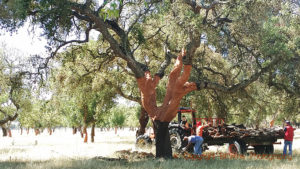 China has become Australia’s largest export market. And the things you do to satisfy your customers! You even put natural cork in the bottles, despite the fact that you are Australian. Amorim, Portugal’s (and the world’s) largest cork manufacturer, tells us that the fastest growing natural cork market in the last 18 months has been Australia. This is a country known for its preference for screw cap. But in China most wine drinkers apparently want wines with natural cork.
China has become Australia’s largest export market. And the things you do to satisfy your customers! You even put natural cork in the bottles, despite the fact that you are Australian. Amorim, Portugal’s (and the world’s) largest cork manufacturer, tells us that the fastest growing natural cork market in the last 18 months has been Australia. This is a country known for its preference for screw cap. But in China most wine drinkers apparently want wines with natural cork.
A big part of the Australian wines is sealed with a screw cap. But there, as well as in neighbouring New Zealand, which is also a screwcap aficionado, producers are increasingly looking towards natural cork. This is largely due to the efforts that Amorim and other cork manufactures have made and still make to reduce the risk of cork defects. But maybe even the Kiwis and the Aussies have a secret penchant for the natural cork? We are in any case grateful to anyone who helps to preserve the fantastic cork forests in Portugal. Read more: thedrinksbusiness
Imagine if you would buy a vineyard in France!
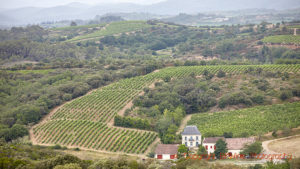 It is important to choose carefully if you want to become a vineyard owner in France. If you are not staggeringly rich of course. One hectare of vineyard that is not in an appellation costs a reasonable (?) 14,200 euros. On average, the appellation vineyards cost 147,300 euros per hectare. But here too you can find much cheaper if you choose appellations that are not so prestigious. The most expensive ones are of course in Bordeaux, Burgundy and not least in Provence (and Champagne). There the prices continue to rise and rise. An effect of the world’s craze for rosé wine. And luxury vacation homes.
It is important to choose carefully if you want to become a vineyard owner in France. If you are not staggeringly rich of course. One hectare of vineyard that is not in an appellation costs a reasonable (?) 14,200 euros. On average, the appellation vineyards cost 147,300 euros per hectare. But here too you can find much cheaper if you choose appellations that are not so prestigious. The most expensive ones are of course in Bordeaux, Burgundy and not least in Provence (and Champagne). There the prices continue to rise and rise. An effect of the world’s craze for rosé wine. And luxury vacation homes.
Last year, in 2018, 8,750 vineyard transactions were concluded in France at a price of a total of 844 million euro. 6,800 hectares changed owners. Thus, an average cost of 124,118 euro/ha. This acreage is not so much considering that France has a bit more than 700,000 hectares of vineyards. 1% of the land. But this is what it is approximately every year. Read more: safer (pdf)
The lawyer who revolutionized the wine world retires
 Robert Parker sold his Wine Advocate a few years ago but now he has officially retired. Even if you don’t see the advantages of scoring a wine on a 100-point scale you can’t deny the impact Robert Parker has had on the wine world. He was the lawyer who became a wine critic and who created, or at least made popular, the now widely used 100-point scale. He became known in the mid-1980s, not least because he “discovered” the greatness of the 1982 vintage in Bordeaux. Having high points in his newsletter The Wine Advocate meant high prices and secure sales for those wines. No wonder some producers changed their style in the hope that their wines would appeal to Parker. Who was, rightly or wrongly, accused of enjoying rich, lush, oaky wines.
Robert Parker sold his Wine Advocate a few years ago but now he has officially retired. Even if you don’t see the advantages of scoring a wine on a 100-point scale you can’t deny the impact Robert Parker has had on the wine world. He was the lawyer who became a wine critic and who created, or at least made popular, the now widely used 100-point scale. He became known in the mid-1980s, not least because he “discovered” the greatness of the 1982 vintage in Bordeaux. Having high points in his newsletter The Wine Advocate meant high prices and secure sales for those wines. No wonder some producers changed their style in the hope that their wines would appeal to Parker. Who was, rightly or wrongly, accused of enjoying rich, lush, oaky wines.
On the other hand, the 1990s was the golden age of new oak barrels and new technology, and on top of that new markets emerged with new taste preferences. Everything was definitely not Parker’s “fault”. In any case, today’s abundance of wine sites and wine blogs guarantees that one single person will never again have such influence that Parker enjoyed. For better or for worse. Each one will decide.
Travel: Come to Bordeaux on a wine tour this autumn.
Export of Champagne: Great Britain in the lead and Sweden in an honorable tenth place
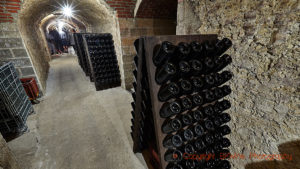 The number 1 export country for champagne is the United Kingdom which last year imported 26.7 million bottles, followed by the United States with 23.7 million bottles, Japan 13.5M, Germany 12.1M, Belgium 9M, Australia 8.3M, Italy 7.3M, Switzerland 5.7M, and Spain with 4.1 million bottles. Sweden is still number ten in Champagne’s export league. In 2018, Sweden imported 3,164,765 bottles of champagne, a slight decrease from 2017. Not bad for a small country. The biggest market for champagne is, of course, the domestic, La France.
The number 1 export country for champagne is the United Kingdom which last year imported 26.7 million bottles, followed by the United States with 23.7 million bottles, Japan 13.5M, Germany 12.1M, Belgium 9M, Australia 8.3M, Italy 7.3M, Switzerland 5.7M, and Spain with 4.1 million bottles. Sweden is still number ten in Champagne’s export league. In 2018, Sweden imported 3,164,765 bottles of champagne, a slight decrease from 2017. Not bad for a small country. The biggest market for champagne is, of course, the domestic, La France.
The champagnes that Sweden imports come from the “houses” (76%) (biggish firms, négociants, that don’t own much vineyards), from cooperatives (19%) and from independent growers (5%). Compared with the other countries, Sweden buys a much higher proportion of cooperative champagne. Maybe an effect of the monopoly market and the price pressure? The EU average is 9.6%. The others buy more champagne from the houses. The import of grower champagne is generally low. 10% of Italy’s imports are grower-champagne, but that is the only country where that figure is higher than 5%. Read more: champagne
That grower champagnes are not exported much is a pity. It is often better quality at lower prices than the big “houses”. But the smaller producers don’t have the same marketing clout. You can find some of the best grower champagnes in our book on Champagne.
Travel: Come on a bubbly wine tour to Champagne this autumn.
What is cheaper than oak barrels and sometimes better?
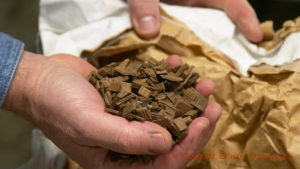 To use oak chips and oak staves as an alternative to oak barrels has been allowed in France for around 10 years now. And producers do use them. Not so much in the regions that have traditionally always used oak barrels, such as Burgundy, Bordeaux and the rest of the Southwest. But in south-eastern France, for example in the southern Rhône valley, some producers see the chips as a way to expand their range and to make wines with a slightly different taste profile from what they usually do. And that without the expensive investment that oak barrels require. Sometimes the reason is so simple that they do not have room in their cellar for barrels. Grenache, a common grape here, is also sensitive to oxidation and does not always do well in barrels.
To use oak chips and oak staves as an alternative to oak barrels has been allowed in France for around 10 years now. And producers do use them. Not so much in the regions that have traditionally always used oak barrels, such as Burgundy, Bordeaux and the rest of the Southwest. But in south-eastern France, for example in the southern Rhône valley, some producers see the chips as a way to expand their range and to make wines with a slightly different taste profile from what they usually do. And that without the expensive investment that oak barrels require. Sometimes the reason is so simple that they do not have room in their cellar for barrels. Grenache, a common grape here, is also sensitive to oxidation and does not always do well in barrels.
The oenologist and consultant Thomas Oui believe that if the oak chips are used correctly, they can give a boost to the wine as the structure improves while the wine feels round and soft. And thus, it appeals to a new groups of consumers. The oak contributes not only with some aromas, but also e g with an effect on the tannins and the structure. Chips or staves is not “cheating”, at least not more cheating that using barrels. Read more: mon-viti.com
Features
Features that we have published during the past month, with lots of reading for you.
BKWine selects the best of Vino Nobile di Montepulciano
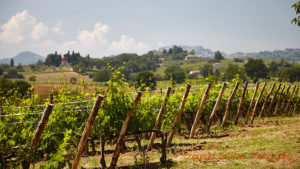 Every year in the spring, Vino Nobile di Montepulciano presents its latest vintages at the “anteprima”. This year they presented the 2016 and the riservas of 2015, the latter with some extra ageing. Vino Nobile, as it is sometimes called for simplicity’s sake, is one of the legendary wine regions in Tuscany and one of the first to get the DOCG designation, the highest in the Italian wine hierarchy. This year’s launches promised good.
Every year in the spring, Vino Nobile di Montepulciano presents its latest vintages at the “anteprima”. This year they presented the 2016 and the riservas of 2015, the latter with some extra ageing. Vino Nobile, as it is sometimes called for simplicity’s sake, is one of the legendary wine regions in Tuscany and one of the first to get the DOCG designation, the highest in the Italian wine hierarchy. This year’s launches promised good.
BKWine Magazine’s Åsa Johansson was there and here she gives you her selection of some of the best wines: Vino Nobile di Montepulciano 2015 and 2016, a selection of the best wines.
Savignon blanc has different style depending on the soil where it grows | Britt on Forbes
Some grapes are easier to recognize than others. Sauvignon Blanc is easy but not the easiest. That distinction goes to Muscat and Gewürztraminer. But still, in a blind tasting you have a fair chance of identifying the Sauvignon Blanc. However, Sauvignon Blanc, like most other grapes, is influenced by their environment, be it the soil, the climate or the winegrower. In a small area like the Pouilly Fumé appellation in the Upper Loire there are a number of different soil types. You have different kinds of limestone present in different proportions, you have flint stone, you have clay etc. All this is reflected in the wine and although sometimes, to be honest, the differences are very subtle, in a well-made, good quality wine you feel them if you make an effort.
Read more on this in Britt’s article on Forbes: Sauvignon Blanc And The Importance Of Soil: Sauvignon Blanc Expert Henri D’Assay Explains.
Travel: Do you want to experience Sauvignon Blanc in New Zealand? Join our wine tour in New Zealand in March 2020!
Travel more: But sauvignon blanc is prominent also in other places, as you can discover on the wine tour to Bordeaux.
The wine conference that wants to generate ideas and debate | Per on Forbes
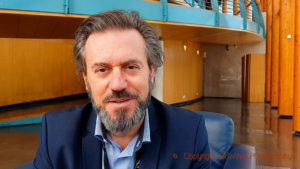 People go to conferences for two main reasons. To get inspiration or learn things about their business. And to meet other people in the same business, to network. But there are not many such events in the wine business. But since a few years there is “Must, Fermenting Ideas”. It is a three-day conference filled with top notch speakers from all over the world that also gives the participants plenty of opportunities to discuss with the speakers as well as with other participants. The conference is the brain-child of two Portuguese wine journalists, Rui Falcao and Paulo Salvador. It takes place in the beautiful seaside resort of Cascais-Estoril, not far from Lisbon. I had the opportunity to sit down with Rui at last year’s conference that I attended and talk about what it is about and why it is interesting for people in the wine business to attend.
People go to conferences for two main reasons. To get inspiration or learn things about their business. And to meet other people in the same business, to network. But there are not many such events in the wine business. But since a few years there is “Must, Fermenting Ideas”. It is a three-day conference filled with top notch speakers from all over the world that also gives the participants plenty of opportunities to discuss with the speakers as well as with other participants. The conference is the brain-child of two Portuguese wine journalists, Rui Falcao and Paulo Salvador. It takes place in the beautiful seaside resort of Cascais-Estoril, not far from Lisbon. I had the opportunity to sit down with Rui at last year’s conference that I attended and talk about what it is about and why it is interesting for people in the wine business to attend.
Read more on this in Per’s article on Forbes: Is This The Wine Industry Conference That Might Change Your Business?: Inspiration for your wine business at Must, Fermenting Ideas | Per on Forbes.
Organic wines from Ruffino
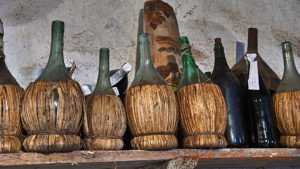 In recent years, Ruffino has invested heavily in extensive environmental work that includes both the production process and new organically grown vineyards. As part of this, they are now launching a number of organically certified wines. Ruffino Prosecco Treviso and Ruffino Pinot Grigio delle Venezie are currently available on the Swedish market. In mid-June, Ruffino Chianti will be launched, also organically certified.
In recent years, Ruffino has invested heavily in extensive environmental work that includes both the production process and new organically grown vineyards. As part of this, they are now launching a number of organically certified wines. Ruffino Prosecco Treviso and Ruffino Pinot Grigio delle Venezie are currently available on the Swedish market. In mid-June, Ruffino Chianti will be launched, also organically certified.
BKWine Magazine’s Ola Öhlund was at the launch: Ruffino invests in the environment, launches an organic range of wines.
Some of Italy’s best sparkling wines from Bellavista in Franciacorta
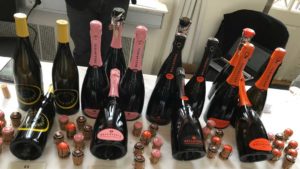 Each wine region has its own character. The same thing goes for sparkling wines. Franciacorta is considered by many to be one of the best bubbly wines from Italy. The grape composition in Franciacorta means that it is often compared to champagne, not seldom to Franciacorta’s advantage. One of the many exciting producers there is Bellavista.
Each wine region has its own character. The same thing goes for sparkling wines. Franciacorta is considered by many to be one of the best bubbly wines from Italy. The grape composition in Franciacorta means that it is often compared to champagne, not seldom to Franciacorta’s advantage. One of the many exciting producers there is Bellavista.
BKWine Magazine’s reporter Tomas Eriksson has tasted a selection of their wines: Bellavista, an exciting bubble wine from the Italian quality region of Franciacorta.
Wine tours
Some information about current and future wine tours with BKWine.
The unknown side of Champagne is the best side | wine tour
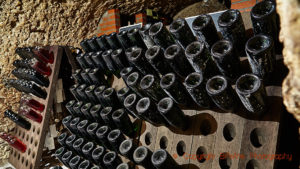 Champagne is not just the famous “houses”. Champagne is above all the small producers who make wine with passion and enthusiasm. The two largest (world famous) producers make 30 and 12 million bottles annually. Large-scale. That is one of the reasons why, on our travel program, we mainly have producers that you might not be familiar with (unless you have read our book about Champagne). Most of the wineries we visit are family producers. You may be invited to lunch at the home of the owner, in their dining room. Or get a walk in the vineyard, where they have planted trees for better biodiversity and have planted all seven (yes!) permitted grape varieties. On the last tour we visited a producer where we met three generations of women winemakers, the oldest 99 years old. Quite different experiences than when visiting famous houses. And better wines. Join us on tour this fall.
Champagne is not just the famous “houses”. Champagne is above all the small producers who make wine with passion and enthusiasm. The two largest (world famous) producers make 30 and 12 million bottles annually. Large-scale. That is one of the reasons why, on our travel program, we mainly have producers that you might not be familiar with (unless you have read our book about Champagne). Most of the wineries we visit are family producers. You may be invited to lunch at the home of the owner, in their dining room. Or get a walk in the vineyard, where they have planted trees for better biodiversity and have planted all seven (yes!) permitted grape varieties. On the last tour we visited a producer where we met three generations of women winemakers, the oldest 99 years old. Quite different experiences than when visiting famous houses. And better wines. Join us on tour this fall.
Read more about the Champagne wine tour, 11-15 September 2019. Book now!
Enjoy exclusive wines and top-class gastronomy | wine tour to Bordeaux
In a way it is strange. Bordeaux is not really known for any gastronomic specialties. Well, yes, there are oysters from Arcachon, Pauillac lamb and grilled entrecote. But still, it is a fairly modest, and not very original, collection of “typical” dishes. What makes it even stranger is that it is probably in Bordeaux that we can offer wine lovers the most outstanding meals. In addition, these are meals that take place “at home”, at the chateaux. The lunches are distinctly in a star-chef class, but since it is served privately there is no star in the Guide Michelin. Outstanding meals that are only offered to private guests, such as BKWine. An additional benefit (definitely not “fringe”!) is that we can enjoy plenty of the chateaux’s own wines to the meals. A luxury that had been hard to achieve in a restaurant. So if you want to enjoy world-class gourmet meals and wines that go well with it, then you should come to Bordeaux with us. Imbibing the chateau atmosphere in addition. Join us this fall!
Read more about the Bordeaux wine tour 2-6 October 2019. Book now!
A memory for life with wines, gastronomy, nature, and people | wine tour in Chile and Argentina
One should perhaps not be a vegetarian when traveling to Chile and Argentina. But of course you can be. We have actually had travellers in Chile-Argentina who have been vegetarians. They have wonderful vegetables, too. One of our lunches is in the middle of a vineyard, under some avocado trees (“palta”), surrounded by the winery’s own vegetable garden. She who prepared the food tells us about her vegetables. But there will undoubtedly be a lot of barbecues. One might think that there will be a lot of malbec too, and of course, there are great malbecs in Argentina. But there is much else too. Wonderfully aromatic torrontés, juicy syrah, structured cabernet. It is very special to come here to South America, two neighbouring countries, both Latin, but so different. Different culture and also different wines. Buenos Aires and Santiago. Mendoza and Casa Blanca. If one has not been here, it is probably difficult to realize the enormous variety that there is. (If you are curious, I can let you know a restaurant that offers pisco with coca leaves in.) Producers who are proud of their bottles. Who gladly show them (and pour them) when we come. We connect the two countries with a bus trip across the Andes. Grandiose. Different. Beautiful. We have not yet seen a condor. Maybe we will, a next time. Join us on this tour!
Chile-Argentina, January 20 – February 2, 2020. Book your wine tour to South America, with Chile and Argentina, now!
A great experience in wine, gastronomy and nature | wine tour in South Africa
South Africa is about the same size as Bordeaux but has much more variety in the styles offered. You have the classics, Stellenbosch and Franschhoek, where you have very classic grapes, cabernet, syrah, chenin blanc, chardonnay etc. Up in Swartland, not far away actually, it is much warmer. Grenache and cinsault, and the somewhat (in?)famous natural wines. Along the south coast, where in the winter you can see whales, you have Walker Bay, Hermanus and Hemel en Aarde. It is cooler. They have become famous for their pinot noirs. Well-deserved. Here, we visit a vineyard far away in the countryside where we probably have the best meal in South Africa. Unexpected but wonderful. It is said that the chef was previously at a star restaurant in Germany. We don’t know if it’s true, but he is certainly worth a star. If you want to understand South Africa, you have to go there. There has been quite a bit in media in recent years about poor working conditions. But you have to put it in perspective, considering how it was before and how it is now. Also, the best way to contribute is to go there. It is also a guaranteed to be a great experience in gastronomy, wine and nature. Join us here this winter!
South Africa, February 15-23, 2020. Book your wine tour to South Africa now!
The unlikely variation in New Zealand | wine tour
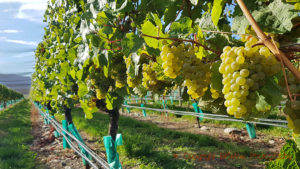 When you start up on the North Island in Auckland and finish at the South Island in Queenstown, it will be a long journey. But it doesn’t feel long. There is so much to look at, so much to experience. And so many wines to taste. I didn’t keep the count when we were there last but it was well over a hundred and in fact not at all as many sauvignon blancs as one would think. They make wonderful syrah wines, fresh riesling, and of course also pinot noir that competes with Burgundy in elegance. It is a journey that is full with experiences, seals along the road (no, not road seals!), hot springs that spray steam a little here and there, thundering waterfalls, a glacier lake with icebergs (well, quite small “bergs”) and much more. The bridge where bungee jumping started… Hobbits, anyone? From afar, it is difficult to fathom how much there is to see and experience here, from the subtropics in the north to the fjords in the south. On the west coast of the South Island they get an unlikely 5000 mm of rain per year (five meters! Five times as much as Seattle). No, we do not go exactly to that place, instead we enjoy tasting pinot noir in Central Otago where it is dry and sunny. Join us there this winter!
When you start up on the North Island in Auckland and finish at the South Island in Queenstown, it will be a long journey. But it doesn’t feel long. There is so much to look at, so much to experience. And so many wines to taste. I didn’t keep the count when we were there last but it was well over a hundred and in fact not at all as many sauvignon blancs as one would think. They make wonderful syrah wines, fresh riesling, and of course also pinot noir that competes with Burgundy in elegance. It is a journey that is full with experiences, seals along the road (no, not road seals!), hot springs that spray steam a little here and there, thundering waterfalls, a glacier lake with icebergs (well, quite small “bergs”) and much more. The bridge where bungee jumping started… Hobbits, anyone? From afar, it is difficult to fathom how much there is to see and experience here, from the subtropics in the north to the fjords in the south. On the west coast of the South Island they get an unlikely 5000 mm of rain per year (five meters! Five times as much as Seattle). No, we do not go exactly to that place, instead we enjoy tasting pinot noir in Central Otago where it is dry and sunny. Join us there this winter!
New Zealand, March 9-24, 2020. Book your wine tour to New Zealand now!
Don’t be an egoist! Share with your friends and other wine enthusiasts! Forward the Brief to your friends! Suggest that they sign up for a free subscription !
© Copyright BKWine







